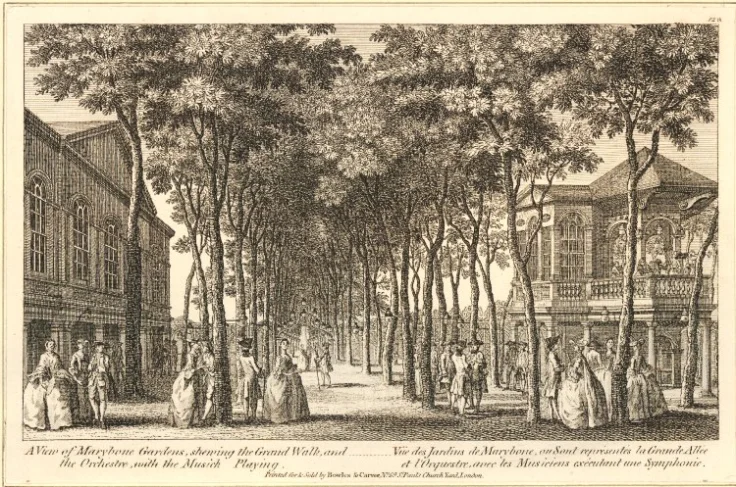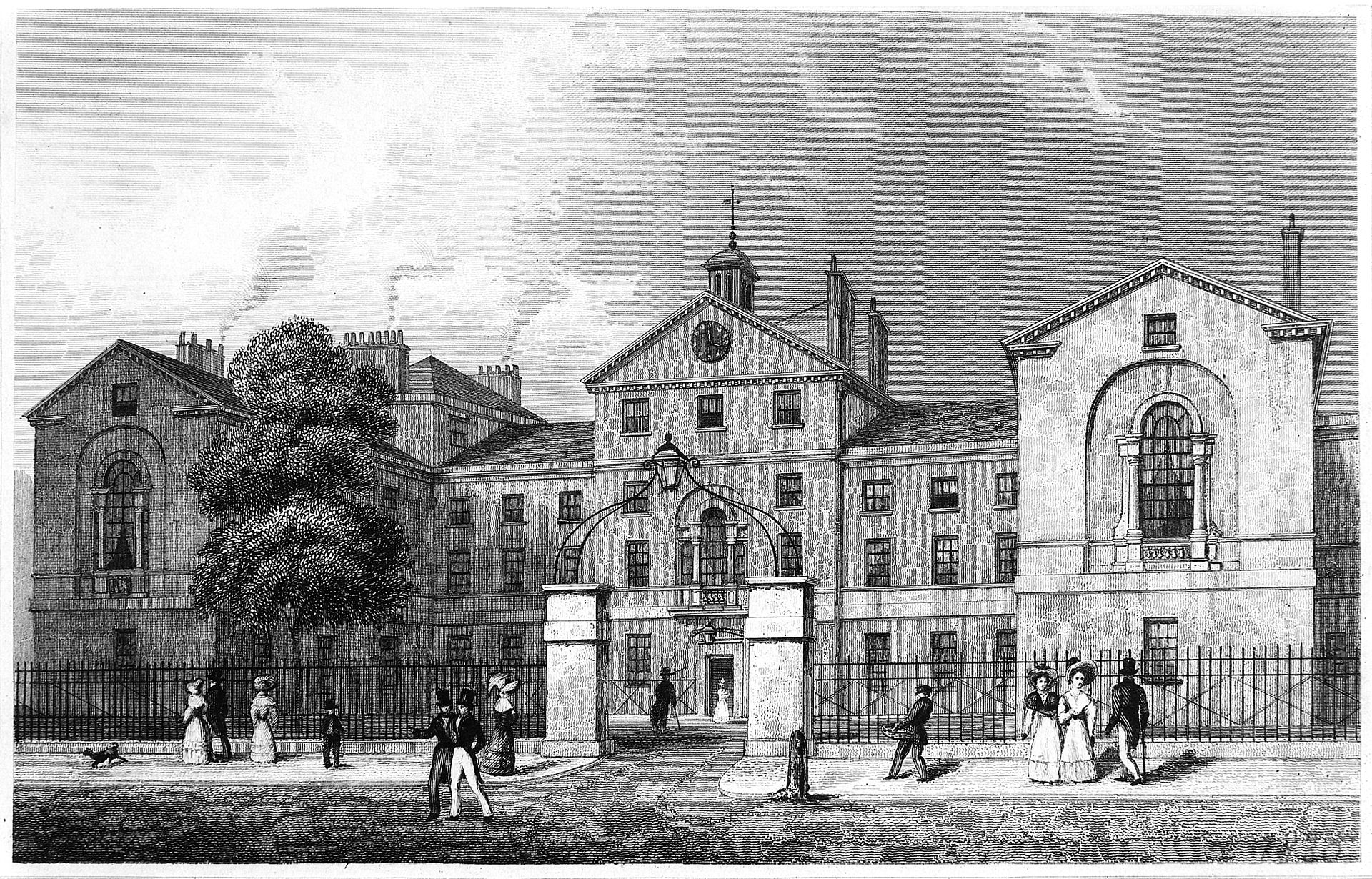From Domesday until now
The 18th Century
By the 18th century, St Marylebone had gone from being a small town with a rural community to a rapidly expanding parish of burgeoning prosperity. The area was becoming increasingly wealthy and attracting more people to move to the parish.
For example, the pleasure ground of Marylebone Gardens were laid to the southeast, drawing more people to the area. A pleasure garden is a garden or park open to the public for leisure and recreation. During the British early modern and Victorian eras, pleasure gardens became very popular and would often feature attractions such as concert halls, bandstands, zoos, and menageries. The Marylebone Pleasure Gardens were opened in the grounds of an old manor house and were a space for “polite, sociability and leisurely retreat.” Samuel Pepys, notable diarist and naval administrator, visited the Marylebone Gardens and wrote: “And we abroad to Marrowbone, and there walked in the garden, the first time I ever was there, and a pretty place it is.”
The second church building was demolished in 1740 and a new one replaced it on the same site. However, between 1739 and 1795, the number of houses in the area grew from 577 to 6200 houses, quickly making this small parish church too small for its community. Thus, a fourth parish church was planned and built in the 19th century. The third parish church was kept as a small chapel of ease until it was demolished in the 20th century after being badly damaged during the Second World War.

During this time, prolific hymnwriter, poet, and cleric, Charles Wesley (1707-1788) lived and worked in St Marylebone. He was a recognized figure in the community, often seen wearing a blue coat and a broad hat while riding a white pony; it was while roaming the streets of St Marylebone that he composed many of his most famous hymns, such as “Hark the Herald Angels Sing” and “Love Divine all Loves Excelling.” While on his deathbed, Wesley sent for the Rector of St Marylebone Parish Church, John Harley, and, reportedly, told him “Sir, whatever the world may say of me, I have lived, and I die, a member of the Church of England. I pray you to bury me in your churchyard.” After his passing at the age of 80 on 29 March 1788, in London, his body was carried to the church by six clergymen of the Church of England. Today, a memorial stone to him stands in the Memory Garden in Marylebone High Street, close to his burial site. One of his sons, Samuel, later became the organist for the parish church.
In 1745, the Old Middlesex Hospital was established on Windmill Street, near St Marylebone Parish Church, to provide medical treatment for the poor. This hospital became the first in England to provide maternity beds for patients. The hospital was moved to Mortimer Street in 1757, where it remained until its eventual closure in 2005. In 1987, it merged with the medical school of University College London.

The Old Tyburn Manor House was used as a Hunting Lodge by Henry VIII and Elizabeth I. It later became a boarding school in the 1780s before its demolition in the 1790s.
